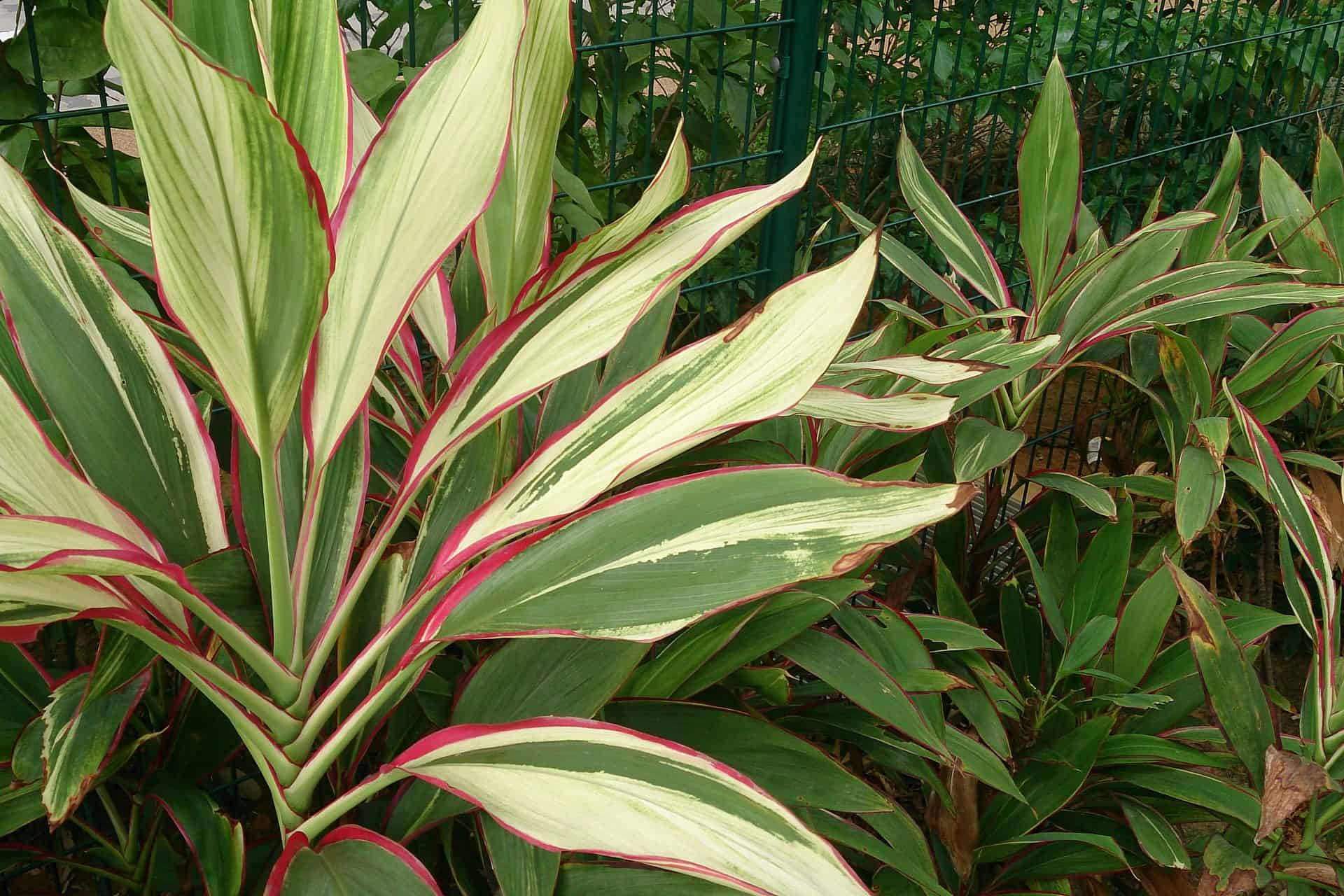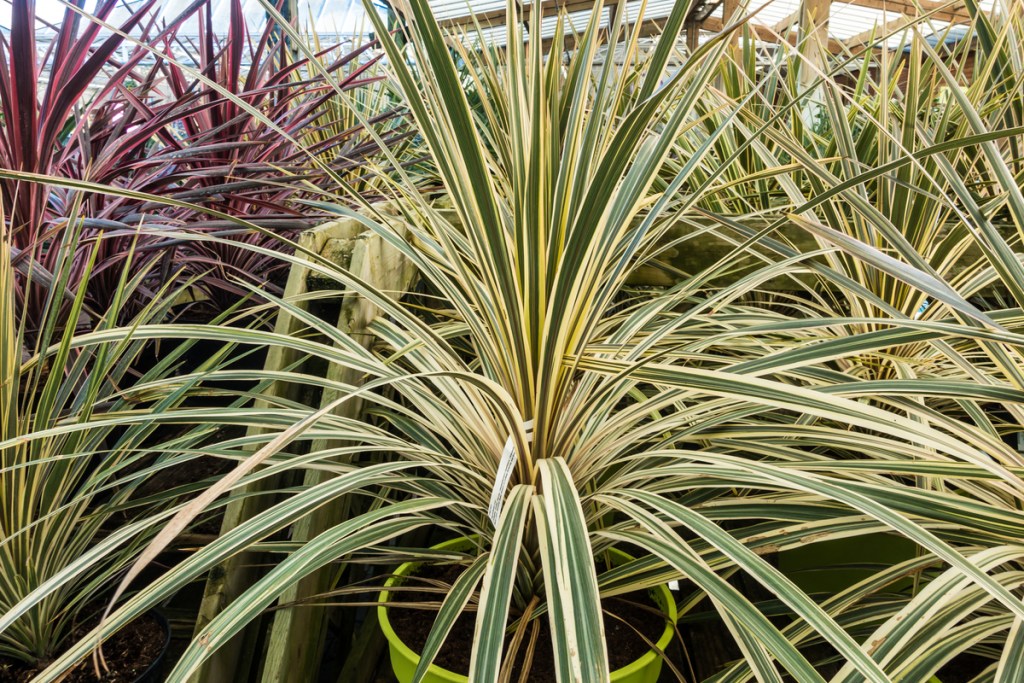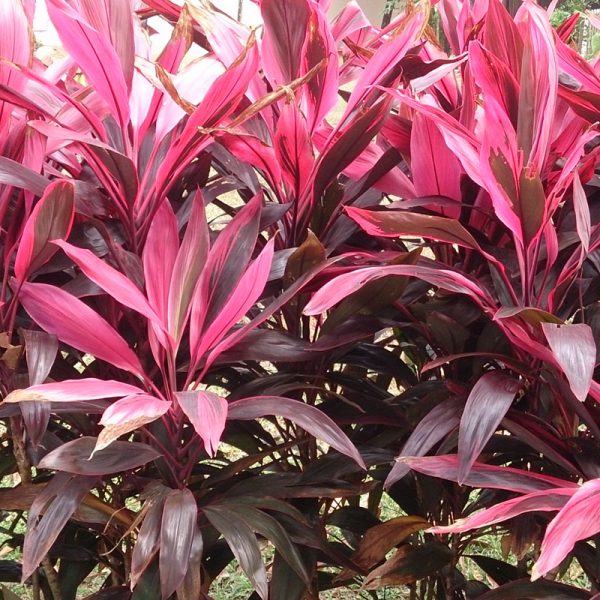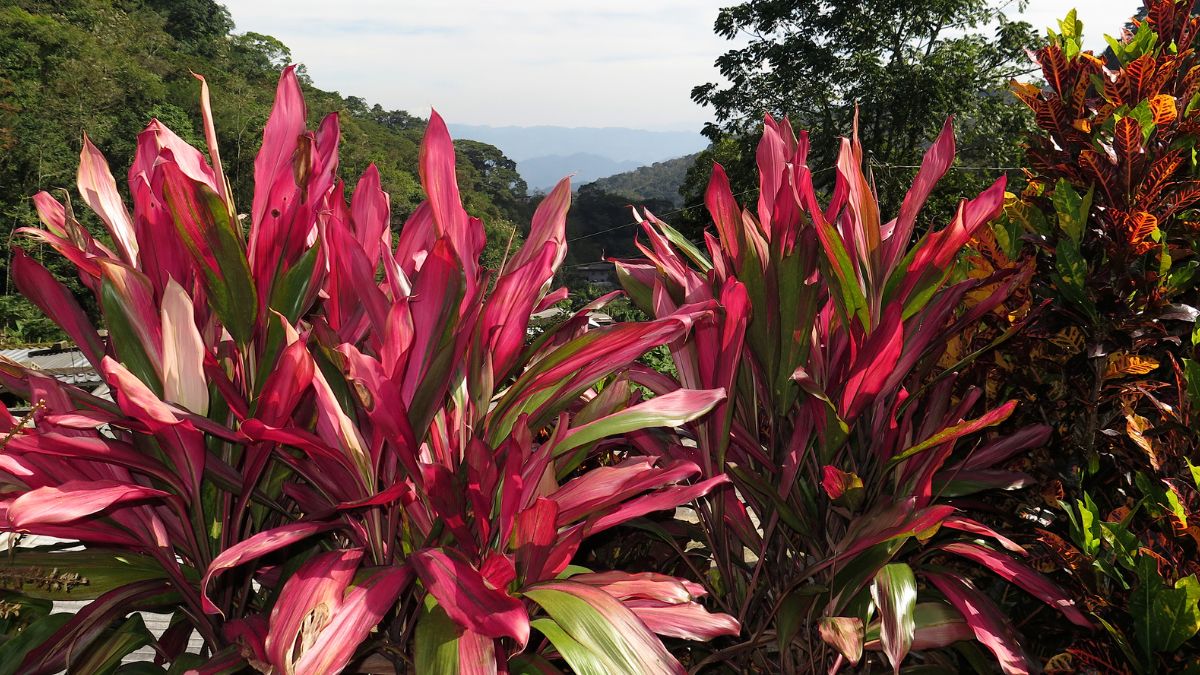Understanding Cordyline Plant Requirements
Cordyline plants are known for their striking, sword-shaped leaves and vibrant colors, making them a popular choice for indoor and outdoor gardens. However, to keep these plants thriving, it’s essential to understand their basic needs. Proper care for cordyline plants involves providing the right balance of lighting, temperature, and watering. By understanding these requirements, you’ll be able to create an environment that allows your cordyline plant to flourish.
Lighting is one of the most critical factors in cordyline plant care. These plants prefer bright, indirect light but can tolerate some direct sunlight. However, prolonged exposure to direct sunlight can cause the leaves to become scorched and discolored. On the other hand, low light conditions can lead to weak and spindly growth. To provide the right amount of light, place your cordyline plant near an east- or west-facing window or use a sheer curtain to filter the sunlight.
Temperature is another crucial factor in cordyline plant care. These plants prefer temperatures between 65°F to 75°F (18°C to 24°C), making them ideal for indoor gardens. Avoid placing your cordyline plant near heating or cooling vents, fireplaces, or drafty windows, as sudden temperature fluctuations can cause stress to the plant.
Watering is also essential for cordyline plant care. These plants prefer well-draining soil and should be watered thoroughly, allowing the soil to dry slightly between waterings. Overwatering can lead to root rot, while underwatering can cause the leaves to become crispy and brown. To determine the right watering schedule, check the soil moisture by inserting your finger into the soil up to the first knuckle. If the soil feels dry, it’s time to water your cordyline plant.
By understanding these basic requirements, you’ll be able to provide your cordyline plant with the care it needs to thrive. Remember to research specific care instructions for your particular cordyline variety, as some may have unique needs. With the right care, your cordyline plant will reward you with vibrant colors and striking foliage, making it a stunning addition to your garden or indoor space.
Lighting for Cordyline Plants: Finding the Perfect Balance
Lighting is a crucial aspect of cordyline plant care, and finding the perfect balance is essential for promoting healthy growth and vibrant colors. Cordyline plants prefer bright, indirect light, but can tolerate some direct sunlight. However, prolonged exposure to direct sunlight can cause the leaves to become scorched and discolored.
To determine the best lighting for your cordyline plant, consider the following factors: the time of day, the direction of the window, and the intensity of the light. East- and west-facing windows are ideal for cordyline plants, as they provide gentle, indirect light. South-facing windows can also work, but it’s essential to use a sheer curtain to filter the intense sunlight.
Low light conditions can also affect cordyline plants, causing weak and spindly growth. If you’re placing your cordyline plant in a low-light area, consider using grow lights to supplement the natural light. LED grow lights are a popular option, as they provide a balanced spectrum of light and are energy-efficient.
When it comes to how to care for cordyline, lighting is a critical aspect to consider. By providing the right amount of light, you can promote healthy growth, vibrant colors, and a robust plant. Remember to monitor your cordyline plant’s response to light and adjust its placement accordingly.
In addition to natural light, cordyline plants can also benefit from artificial light. Fluorescent lights, for example, can provide a balanced spectrum of light and are often used in indoor gardens. However, it’s essential to choose a high-quality light that is specifically designed for plants, as low-quality lights can cause more harm than good.
By understanding the lighting needs of your cordyline plant, you can create an environment that promotes healthy growth and vibrant colors. Remember to experiment with different lighting conditions and monitor your plant’s response to find the perfect balance.
Watering Cordyline Plants: Avoiding Overwatering and Underwatering
Watering is a crucial aspect of cordyline plant care, and getting it right can be a challenge. Overwatering and underwatering are two common mistakes that can have serious consequences for your plant’s health. In this section, we’ll explore the risks of overwatering and underwatering, and provide guidance on how to water your cordyline plant correctly.
Overwatering is one of the most common mistakes people make when caring for cordyline plants. When the soil is consistently waterlogged, the roots can rot, leading to a range of problems, including root rot, leaf drop, and even plant death. To avoid overwatering, make sure to check the soil moisture regularly, and only water your plant when the top inch of soil feels dry to the touch.
Underwatering, on the other hand, can cause your cordyline plant to become stressed, leading to weak and spindly growth. If the soil is too dry for too long, the leaves can become crispy and brown, and the plant may even drop its leaves. To avoid underwatering, make sure to water your plant regularly, but avoid getting water on the leaves or crown of the plant.
So, how often should you water your cordyline plant? The frequency of watering will depend on a range of factors, including the temperature, humidity, and light levels in your home. As a general rule, water your cordyline plant when the top inch of soil feels dry to the touch. This is usually every 7-10 days in the summer months, and less often in the winter months.
In addition to frequency, it’s also important to consider the amount of water you’re giving your cordyline plant. Make sure to water your plant thoroughly, but avoid overwatering. A good rule of thumb is to water your plant until you see water coming out of the drainage holes in the pot.
By following these tips, you can avoid the risks of overwatering and underwatering, and provide your cordyline plant with the right amount of moisture to thrive. Remember, when it comes to how to care for cordyline, watering is just one part of the equation. By combining proper watering with good lighting, fertilization, and pruning, you can create a healthy and thriving plant that will bring joy and beauty to your home.
Fertilizing Cordyline Plants: Choosing the Right Fertilizer
Fertilizing is an essential part of cordyline plant care, as it provides the necessary nutrients for healthy growth and development. When it comes to fertilizing cordyline plants, choosing the right fertilizer is crucial. A balanced fertilizer that contains equal amounts of nitrogen, phosphorus, and potassium (NPK) is ideal for cordyline plants.
When selecting a fertilizer for your cordyline plant, look for a product that is specifically formulated for indoor plants or tropical plants. These fertilizers are designed to provide the necessary nutrients for plants that are grown in containers and are often more concentrated than fertilizers for outdoor plants.
Some popular types of fertilizers for cordyline plants include water-soluble fertilizers, slow-release fertilizers, and organic fertilizers. Water-soluble fertilizers are easy to use and provide quick results, but they can be more expensive than other types of fertilizers. Slow-release fertilizers, on the other hand, provide a steady supply of nutrients over a longer period of time and can be more cost-effective.
Organic fertilizers, such as compost or manure, are a great option for cordyline plants. These fertilizers are made from natural ingredients and are gentler on the plant than synthetic fertilizers. However, they may not provide as much of a boost to the plant as synthetic fertilizers.
When fertilizing your cordyline plant, make sure to follow the instructions on the fertilizer package carefully. Overfertilizing can be detrimental to the plant, so it’s better to err on the side of caution. A general rule of thumb is to fertilize your cordyline plant once a month during the growing season (spring and summer) and once every two months during the dormant season (fall and winter).
By fertilizing your cordyline plant regularly, you can promote healthy growth and development, and keep your plant looking its best. Remember, when it comes to how to care for cordyline, fertilizing is just one part of the equation. By combining proper fertilization with good lighting, watering, and pruning, you can create a thriving and beautiful plant that will bring joy and beauty to your home.
Pruning and Grooming Cordyline Plants: Maintaining Shape and Promoting Growth
Pruning and grooming are essential parts of cordyline plant care, as they help maintain the plant’s shape and promote healthy growth. Pruning involves removing dead or damaged leaves and stems, while grooming involves tidying up the plant’s appearance and encouraging new growth.
To prune your cordyline plant, start by removing any dead or damaged leaves or stems. Use a pair of clean, sharp scissors or pruning shears to make clean cuts just above a node (the point where a leaf meets the stem). This will help the plant heal quickly and reduce the risk of infection.
Next, remove any weak or spindly growth, as this can make the plant look leggy and unkempt. Cut back any stems that are growing outside of the plant’s natural shape, and trim back any leaves that are becoming too long.
After pruning, take a step back and evaluate the plant’s shape. If necessary, use some gentle shaping to encourage the plant to grow in a more balanced way. This can involve gently bending stems or leaves to create a more symmetrical shape.
Grooming is also an important part of cordyline plant care. Use a soft-bristled brush or a damp cloth to gently remove any dust or debris from the leaves. This will help keep the plant looking its best and prevent the buildup of pests or diseases.
Finally, consider using a plant growth regulator to encourage healthy growth and development. These products can help promote root growth, increase leaf size, and enhance overall plant health.
By pruning and grooming your cordyline plant regularly, you can maintain its shape and promote healthy growth. Remember, when it comes to how to care for cordyline, pruning and grooming are just two parts of the equation. By combining these practices with good lighting, watering, and fertilization, you can create a thriving and beautiful plant that will bring joy and beauty to your home.
Pest Control and Common Problems: Identifying and Solving Issues
Cordyline plants are generally hardy and resistant to pests and diseases, but they can still be affected by common problems. In this section, we’ll discuss some of the most common pests and problems that can affect cordyline plants, and provide guidance on how to identify and solve these issues.
Spider mites are one of the most common pests that can affect cordyline plants. These tiny, spider-like insects feed on the plant’s sap, causing yellowing or bronzing of the leaves. To control spider mites, use a gentle insecticidal soap or neem oil, and make sure to isolate the plant to prevent the mites from spreading.
Mealybugs are another common pest that can affect cordyline plants. These small, white insects feed on the plant’s sap, causing stunted growth and yellowing of the leaves. To control mealybugs, use a gentle insecticidal soap or neem oil, and make sure to isolate the plant to prevent the mealybugs from spreading.
Root rot is a common problem that can affect cordyline plants, especially if the soil is too wet or waterlogged. To prevent root rot, make sure to water your cordyline plant carefully, and avoid getting water on the leaves or crown of the plant. If you suspect that your cordyline plant has root rot, repot the plant in fresh, well-draining soil, and prune back any affected roots.
Other common problems that can affect cordyline plants include leaf spot, leaf blight, and crown rot. These problems are often caused by fungal or bacterial infections, and can be treated with fungicides or bactericides. To prevent these problems, make sure to water your cordyline plant carefully, and avoid getting water on the leaves or crown of the plant.
By being aware of these common pests and problems, you can take steps to prevent them from affecting your cordyline plant. Remember, when it comes to how to care for cordyline, pest control and problem-solving are just two parts of the equation. By combining these practices with good lighting, watering, and fertilization, you can create a thriving and beautiful plant that will bring joy and beauty to your home.
Repotting Cordyline Plants: When and How to Do It
Repotting is an essential part of cordyline plant care, as it allows the plant to grow and thrive in a larger pot. But when is the right time to repot your cordyline plant, and how do you do it correctly? In this section, we’ll answer these questions and provide step-by-step instructions on how to repot your cordyline plant.
The best time to repot your cordyline plant is in the spring or summer, when the plant is actively growing. This allows the plant to establish itself in its new pot before the winter months, when growth slows down. Look for signs that your cordyline plant needs to be repotted, such as the plant becoming pot-bound, or the soil becoming depleted of nutrients.
To repot your cordyline plant, start by choosing a pot that is only slightly larger than the current one. This will prevent the soil from becoming too wet and reduce the risk of root rot. Next, prepare the new pot by adding a layer of fresh, well-draining soil. Gently remove the plant from its current pot, taking care not to damage the roots.
Inspect the roots of the plant and trim back any that are circling or growing outside of the pot. This will help the plant to establish itself in its new pot and prevent it from becoming pot-bound. Place the plant in its new pot, making sure that the soil level is the same as it was in the previous pot.
Water the plant thoroughly after repotting, and provide it with bright, indirect light. Keep the soil consistently moist, but not waterlogged, and fertilize the plant regularly to promote healthy growth.
By repotting your cordyline plant correctly, you can provide it with the room it needs to grow and thrive. Remember, when it comes to how to care for cordyline, repotting is just one part of the equation. By combining repotting with good lighting, watering, and fertilization, you can create a thriving and beautiful plant that will bring joy and beauty to your home.
Propagation and Division: Sharing Your Cordyline Plant with Others
Propagation is a great way to share your cordyline plant with others, and it’s also a good way to create new plants for yourself. There are several methods of propagating cordyline plants, including division, leaf cuttings, and seed propagation.
Division is a simple and effective way to propagate cordyline plants. This method involves separating the roots of the plant into smaller sections, each with its own set of leaves. To divide your cordyline plant, start by carefully removing the plant from its pot. Gently separate the roots, making sure each section has at least one growing stem. Replant the sections in a new pot, using a well-draining soil mix and providing bright, indirect light.
Leaf cuttings are another popular method of propagating cordyline plants. This method involves cutting off a healthy leaf from the mother plant, and then rooting it in a pot of soil. To take a leaf cutting, choose a healthy leaf with a long stem. Cut the stem from the mother plant, just above a node (the point where the leaf meets the stem). Remove any lower leaves from the cutting, and then plant it in a pot of well-draining soil. Water the soil gently but thoroughly, and provide bright, indirect light.
Seed propagation is a more complex method of propagating cordyline plants, but it can be a fun and rewarding experience. To propagate cordyline plants from seed, start by collecting seeds from a mature cordyline plant. Plant the seeds in a pot of well-draining soil, and provide bright, indirect light. Keep the soil consistently moist, but not waterlogged, and fertilize the seedlings regularly.
By propagating your cordyline plant, you can share it with others and create new plants for yourself. Remember, when it comes to how to care for cordyline, propagation is just one part of the equation. By combining propagation with good lighting, watering, and fertilization, you can create a thriving and beautiful plant that will bring joy and beauty to your home.






:max_bytes(150000):strip_icc()/grow-cordyline-indoors-1902747-hero-011-05fac05cfe2845309cc8840a4cc87bbc.jpg)

